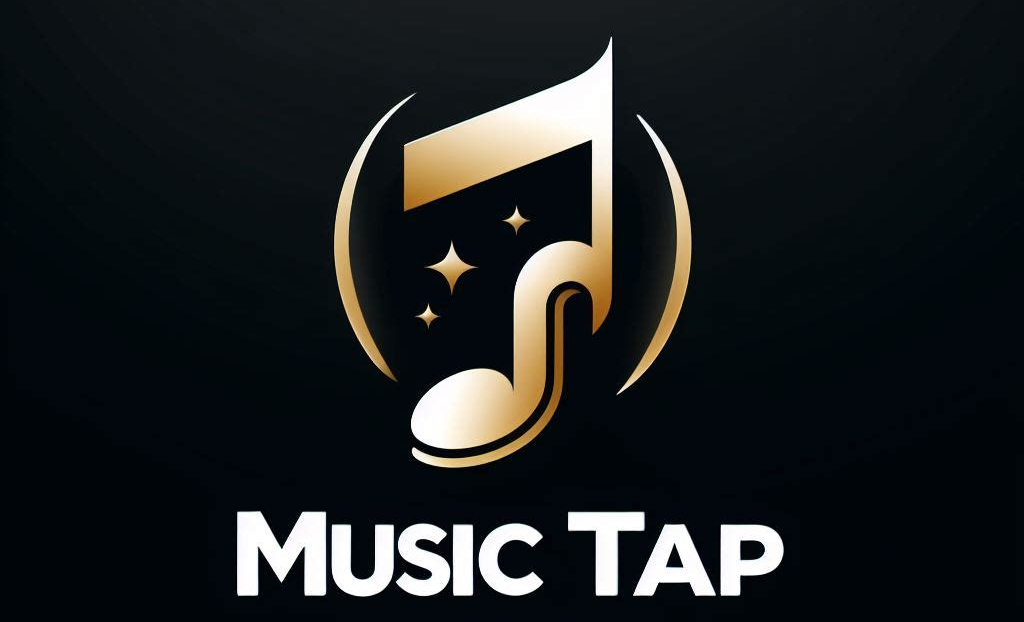Guy Manning (Damanek, UPF) talks songwriting, modernization, and journeys In Flight
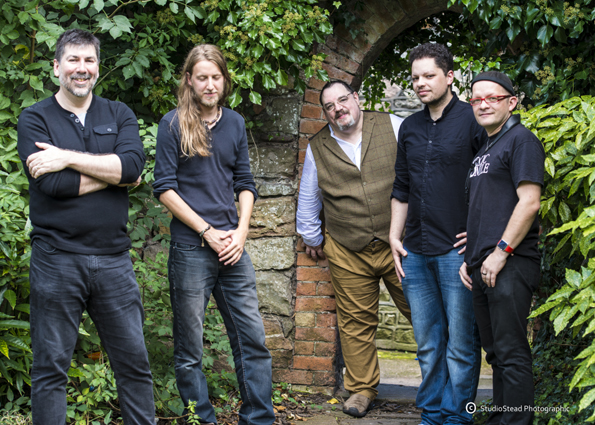
Thanks so much for taking the time to chat.
No problem at all, it’s lovely to be able to talk about my music.
And lovely music it is! You’ve done quite a lot already in your musical career. What was the impetus for adopting a new musical identity as part of Damanek?
I had done 15 albums under the name of Manning and wanted to work more closely and with more input with other musicians. Really, the project came out of the work I did with Mark Trueack on the United Progressive Fraternity album where I had also brought in Marek [Arnold] and Dan [Mash] to do that album. The idea behind Damanek was that I could write material but that I would get more involvement from the musicians I was now going to work with.
To that end I asked Marek to be involved and I also wanted a very good keyboard player too and so thought of Sean [Timms] immediately, having been friends with him for a while and a fan of Unitopia. And Dan too, of course. I had written quite a lot of material that was earmarked for UPF album #2 but by the time we were ready to look at that, Mark had already decided to get a local live band organised and to work more closely with Steve Unruh.
So my material was not required at this time but I didn’t want it to go to waste because I thought there were some very, very good pieces in the bunch, and so Damanek was brought together to record the debut album On Track.
So, Damanek has a dedicated saxophonist and multiple keyboard players. How does that influence the arrangements?
I always bear in mind the musicians that I believe I’m going to be working with, and to that end all the pieces I have written I demo thoroughly, including rough sax parts, sax arrangements, lots of keyboard parts, bass, percussion, etc. What happens after that is that many of those original demo parts change naturally, replaced by the musicians within the project. I will review and monitor parts coming back from the players and in the vast majority of the time, those parts are really quite brilliant and need no more interaction from me. However, if I can make suggestions or perhaps like the musician to try a different tack maybe away from their comfort zone, then I will obviously let them know.
Once we have the building blocks for a Damanek piece assembled, the project will move from my studio here in the UK to be with Sean in Adelaide in his studio. At that point the responsibility for mixing is firmly laid at his door and he can manipulate the played parts and arrangements and then discuss them with me. The songs bounce backwards and forwards until we’re both happy with the end result.
Do you find that Sean’s mixes are pretty immediately sympatico with what you envision for the music? Or does it take a lot of bouncing back and forth?
Yes I do I find working with Sean and his perspective on the music very refreshing, and definitely sympathetic and empathetic with what I envisage. Sometimes he will want to strip things back and I will want to keep them a little more chaotic and quirky, but that’s the joy of working in a partnership, creating something which is greater than the individual parts. That can take a while being bounced back and forth and under discussion and review, but in the end we are both proud at the end product. And I also get input from Marek and Dan as well of course. But for the first two albums, primarily I have been the composer.
The mixes y’all have settled on come out very cleanly—while there’s a lot going in with the instruments, everything is well-located and discernible.
My original demos are quite dense in places and so I rely on Sean to see the wood for the trees. He is a consummate producer and it’s a pleasure to listen to the music once he’s had his hands on it.
In composition and execution, what did you find challenging in preparing a follow-up to an album as well-received as On Track?
The only challenge in following up on the debut album was to try and improve on it. Many of the themes on the On Track album were of sociological and ecological concerns; I felt strongly on a number of topics and wanted to write about them.
For the new album, In Flight, I was less preachy and more concerned with the human narrative in the pieces I was writing. I wanted to put the listener firmly into the storylines and to be the observers as these unfolded. In Flight has no overarching concept, but I can say that nearly all the pieces are concerned with journeys of one type or another. Those journeys can be emotional, spiritual, migratory, romantic, and emotive.
Yes, I noticed that, as with the previous album, there’s quite a geographical breadth on In Flight, with very specific references to locations in Croatia, China, and the United States. What’s the importance of *place* in Damanek’s music?
I think for most narratives I write there is quite a visual aspect embedded in the composition. “Ragusa” for example is definitely set in a romantic East European setting and the music was given Eastern European lilt to support that. “Big Eastern” of course tells us of the journey from East to West across generations from the poorest rural parts of China to the affluence of the west coast of America. “Skyboat” is set in a post-dystopian future where mankind has abandoned warfare and returned to a more communal and agrarian way of life…in this case there is no real identified location but more of a point in time. So to answer your question, I see the songs in my mind’s eye visually and location characterisation and point in time all extremely important.
The passage of time looms large as well then, doesn’t it? You mentioned “Ragusa,” the first single from In Flight. Lyrically it features a kind of romantic reminiscing of an old man. But there’s more to the story than just yearning for lost youth, isn’t there?
Yes, with “Ragusa” it’s not just the yearning of one old man, but a consideration around the balance between industrialisation and romantic location. The main character in “Ragusa” is looking back at his youth, but is also in a state of mourning for the loss of beauty, a fading remembered glimpse of the beautiful architecture of the past, perhaps lost to modernisation. In the end the city itself’s actual location is not as important as the fading light on past glories.
“Cosmic Score” from On Track is parenthetically titled “Heaven Song Pt. 1,” while “Moon-Catcher” from the new album fills the role of “Heaven Song Pt. 2.” Was “Moon-Catcher” already in the works when On Track was recorded?
No I had not written “Moon-Catcher” at that point but they are jointly concerned with my musings on the night sky in different perspectives. So I guess I am just creating a canon of songs on a similar theme or with some linking factor.
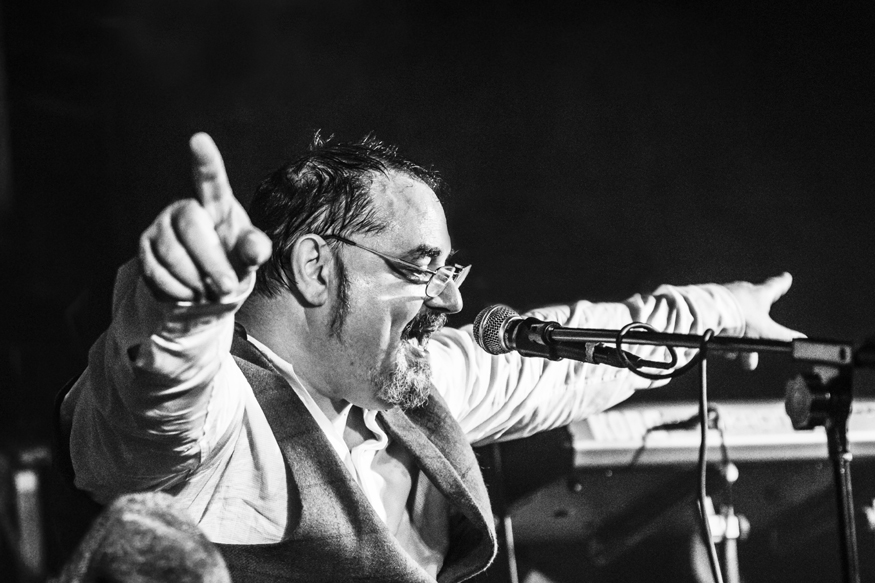
How do you determine that *this* song idea is a standalone or a multi-part epic, while *that* will become a continuing series? You had some sense with On Track that you were writing a “Pt. 1” of something.
I saw them as separate songs but had to admit that they originated from a similar place in my imagination and I recognised then I had other ideas to use as the basis for other pieces yet to come. So I consciously labelled “The Cosmic Score” as part 1, thus signalling there was more to come. There may be a “Heaven Song” part 3, who knows? And I quite liked the idea of continuity across the albums. There is already continuity in fact, in the artwork, as the logo and branding on both albums has unified design in them.
Right, which enhances the visual element of the music. There’s a similar colour scheme and wide-angle view for both album covers, but the art for In Flight is especially detailed and vibrant. How did you get connected with the artist, Tony Lythgoe?
Well for me music, lyrics, and artwork are a package. I often get told by people writing to me that they do not really listen to the lyrics, which for me is a great shame. I have things to say, the music is created to deliver some of those messages and the artwork on occasion bring those to life visually. Tony was introduced to me by Mike Holmes from GEP [Giant Electric Pea] and IQ. The ideas we had for On Track he felt were not aligned enough to the music and so suggested Tony become involved. I sent musical demos and the lyrics to Tony and let him go to work.
For In Flight, the cover image he sent was based loosely on his interpretation of the lyrics for “Skyboat.” But version 1 had it set in the midst of the warfare which in the song had been concluded, so I asked him go back, consider that more passive agrarian relationship and the visualisation of boats flying above the farms and landscape whilst the central character considers the history that has brought him to that moment.
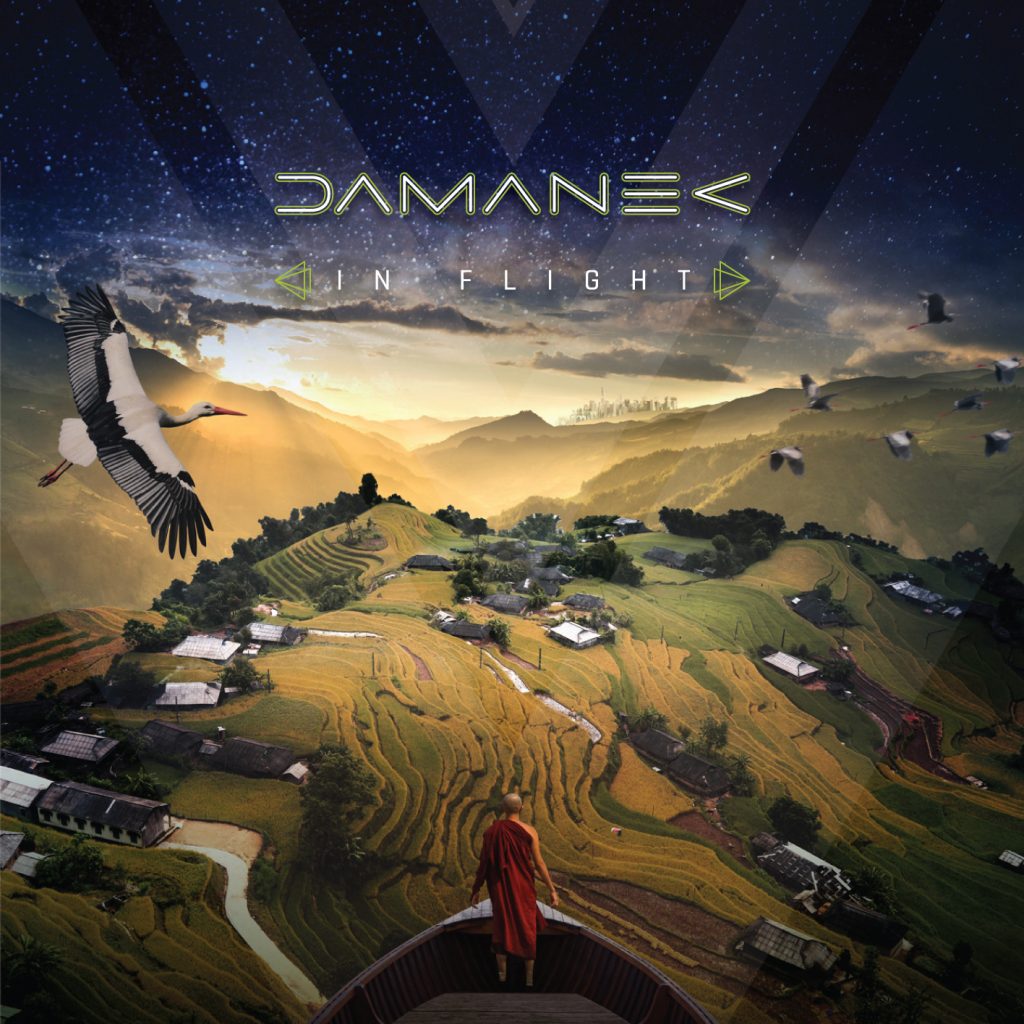
So, there’s a tight connection between the art and the lyrics—really, the music itself even sounds to me like the purples & greens of the cover art. It is indeed a shame then that some listeners are overlooking the lyrics. You’ve written some great lines on the new album.
“Nature is violent/Nature forces a way/And all in its path gets turned to clay /As it was at beginning, so it’s at the end/Bend or be broken my friend!“
Well thank you, sometimes I think I do get it right but I make sure that I put the time in to research the background and context of the pieces I’m trying to highlight. Al Stewart told me that!
That’s a great “big picture” framing of the journey in the 3-part epic, “Big Eastern Skies,” that then moves down to the specific details, even naming a particular restaurant in San Francisco. Is it important to you to sort of “pre-interpret” the meaning of the songs? What I mean is, the songs themselves comment on their own contents.
Well all the events in the songs usually have some basis in fact and on “Big Eastern” especially in part 3 those facts are recorded. The Golden Dragon Massacre actually happened and Joe Fong and associates were believed to be responsible.
On the website for the new album I have listed the lyrics and also some links to the research I did and articles I read to produce the lyrics. I normally start with either a fixed storyline in mind or perspective I want to relay the listener. I do the research so that I have a much better understanding of the subject matter and so construct a more poetic lyric without having to be over-prescriptive.
Do you have a personal connection to the events you write about? I’m wondering how you first got started thinking about the city of Ragusa, or the stories of The (Night)Crawler.
No, normally the material I write has not been of a personal nature to me individually, more to do with stories I have researched or heard about which I feel I can put my spin on. With “Ragusa” for example, I have never been to Dubrovnik, but have empathy for the fading away about cities as modernisation strides on. With “The Crawler” I wanted to create something dark. On Track was quite spacey and a lighter feeling album. In Flight I wanted to be denser. “Ragusa” for example is dripping in reverb and melancholy. For “The Crawler” I told Sean to be nasty! It deals with the subject of fear in the psyche, the things that hide under the bed and Go Bump In The Night.
You’ve mentioned ‘modernisation’ and its impact on cities, people groups, ecology (thinking about songs like “Long Time, Shadows Fall”). How do you think modernisation transforms our relationship to these darker psychological elements that used to come out via dark fables like that of The Crawler?
Well we still have plenty to fear in the modern age but fables like The Crawler are definitely a product of simpler times. Technology has quite literally shone a spotlight on many of the dark fears we had of the Unknown but as I say has given rise in itself to a whole new set of fears. With the emergence of things like the Internet, smartphones, cameras, social media, nothing stays hidden for very long. We have whole new set of worries to consider.
In the past people worried about eclipses and whether the world would disappear in Darkness. Now in the bright light of the modern age we wonder whether the world will disappear in a flash of bright light.
Yeah. That’s heavy.
Sorry.
But it sounds accurate. Do you think progressive approaches to music are particularly equipped to explore these heavier sorts of themes?
I honestly think that it doesn’t matter the genre of music you use to impart your message. Themes such as on the new album can be imparted via a simple folk song if needed. I use a larger brush on my canvas in order to try and paint a more colourful picture but if you peel back the layers underneath you should find an insightful lyric and a good tune ( hopefully).
As it should be.
The more instrumental sections are there to add spice and melodiousness to the piece. It allows the musicians to pick up the brush and paint with me.
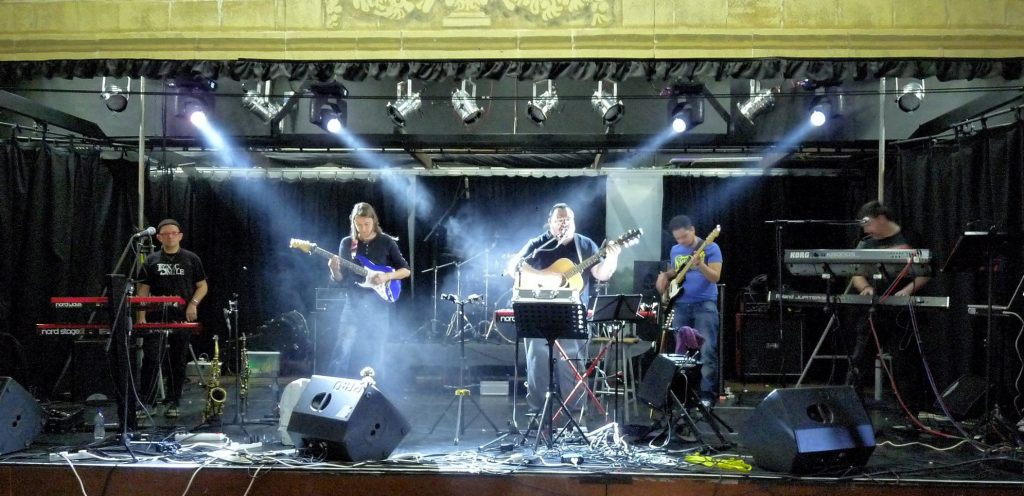
What are y’all’s plans for touring In Flight?
We have booked a short tour of Europe and the UK starting in the middle of November 2018. Primarily, this will see Damanek and Southern Empire (Sean’s other the band) on the road. For Europe, we will also be joined by Seven Steps To The Green Door (Marek’s other band). Southern Empire have released a fabulous new album called Civilisation and you should check out their live performances on YouTube as they are fantastic. I have my work cut out! But I have better jokes! Full details of the tour and the new album can be found on our website: www. Damanek.com
We would of course love to tour the album further but to do that it’s quite expensive and so festivals would seem to be the best solution. However there are a lot of bands, a lot of good bands out there at the moment competing for the places. So any promoters of festivals, please bear us in mind. We would like to tour further afield and maybe return to the USA again.
Promoters take note!
You’ve recently launched a Facebook Group for Damanek. What are your hopes for the group?
Well these days a lot of bands find it easier to get noticed, to get into the radar, by engaging with as many people as possible. Social media has opened up a gateway to be able to do that easier. The idea of the group is to try and build a set of people who believe in the music and to encourage them to discuss it and to spread the word hopefully. The downside of social media in this aspect is that we get bombarded with almost adverts for everyone out there.
As you know I like to talk about the music, I like to discuss it and being relatively unknown get rare opportunities to do that in any mainstream way. The music is written for artistic reasons but the success of bands these days relies heavily on the support of people who like the music and messages and are able to express that. But the group can discuss anything at all, not just our music but anything that impacts them emotionally or that they want to promote within reason. The group is not meant to be a siloed ego trip for the band.
Hah!
Even though it is always very nice to hear that people like the music.
Right. So much is word of mouth. I suppose the engagement online is even more important when large-scale touring is off the table.
Yes of course, so many bands, so little time. Progressive music, although I still believe relevant today, has traditionally been for an adult audience that can invest time into listening. As these audiences get other responsibilities such as families, jobs, natural ageing, there is less free time to indulge the musical part of the brain.
That investment in listening is still frequently mentioned as part of the allure of vinyl. This album will be released via CD and digital download only, is that right?
GEP do not currently provide digital downloads directly; however, I have just taken a look at the Amazon site and individual tracks or the album can be purchased on MP3, so I guess that will continue.
I would love to get the albums onto vinyl but this takes investment, and so we concentrate on the CD package and hope this boosts our presence. More buyers, more supporters allows us to explore other ways of getting the music out there.
In Flight is available for preorder from GEP. Is the FB group the best way for people to keep up with the latest Damanek news?
The best way to keep up-to-date with our activity is via the Facebook page and our band website. On the website you can sign up for our mailing list and periodically I send out a bulletin exclusively to the members.
I hope In Flight widens that circle of Damanek supporters. It well deserves the investment of time for a listen or 5. It’s been a pleasure chatting, Guy.
Very glad you have been giving it the time it needs to “bed in.” I hope more people can do that. It’s just lovely to be asked questions about the music I care about and I love to discuss it so thank YOU very much.
In Flight is available for pre-order via Giant Electric Pea
https://youtu.be/xttPn3wdWxE
